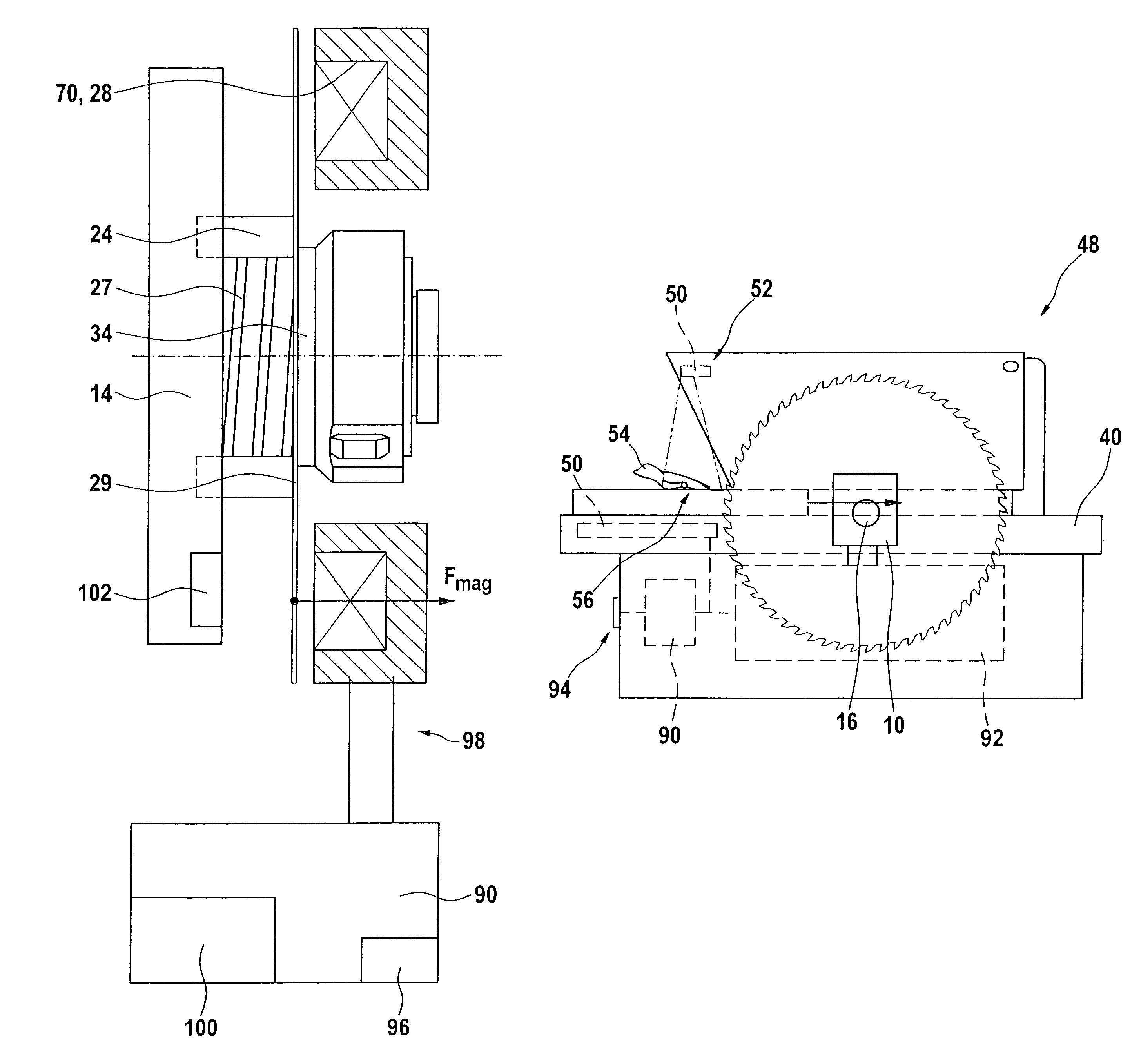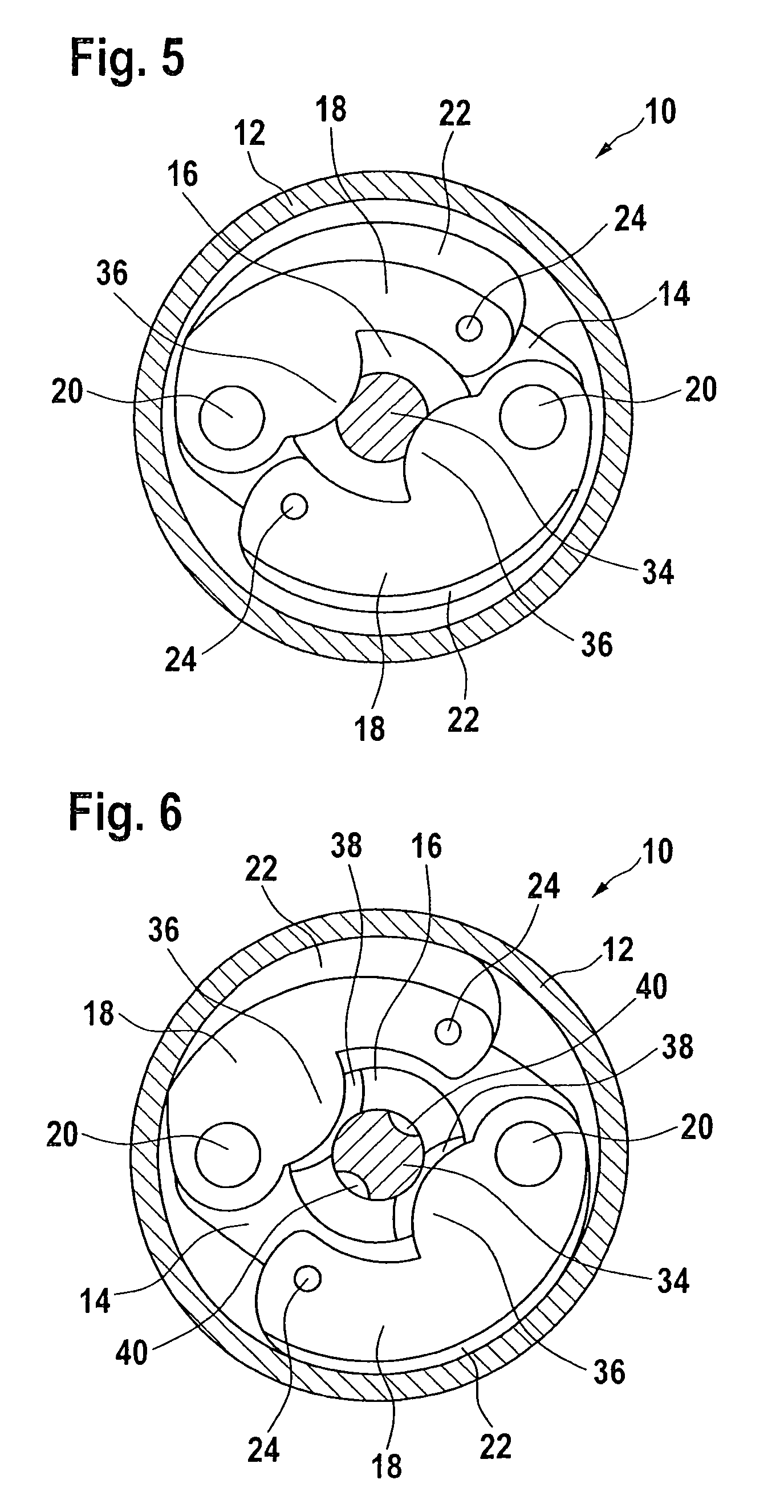Emergency braking system for machine tools
a technology of emergency braking and machine tools, applied in the direction of couplings, manufacturing tools, slip couplings, etc., can solve the problems of corresponding time expenditure for procurement and installation, significant consequential costs, and action on machining tools
- Summary
- Abstract
- Description
- Claims
- Application Information
AI Technical Summary
Benefits of technology
Problems solved by technology
Method used
Image
Examples
Embodiment Construction
[0046]The design principle of the emergency braking system according to the present invention is explained with reference to FIGS. 1 through 6. FIGS. 7, 8, and 9 are used to describe details of the actuator for the locking device of the braking system according to the present invention, the diagnostic system, and the interaction of these two units. FIGS. 10 and 11 show a machine tool according to the present invention in the form of a circular table saw having an emergency braking system according to the present invention.
[0047]FIGS. 1 through 6 show schematic views of an emergency braking system according to one example embodiment of the present invention, which is denoted overall by reference numeral 10 and which is used, for example, to bring a saw blade of a circular table saw (not shown here; see FIG. 10) which is in a hazardous situation to a standstill within a very short time period in the range of a few milliseconds.
[0048]Emergency braking system 10 for a machine tool for a...
PUM
| Property | Measurement | Unit |
|---|---|---|
| time | aaaaa | aaaaa |
| current | aaaaa | aaaaa |
| magnetic field | aaaaa | aaaaa |
Abstract
Description
Claims
Application Information
 Login to View More
Login to View More - R&D
- Intellectual Property
- Life Sciences
- Materials
- Tech Scout
- Unparalleled Data Quality
- Higher Quality Content
- 60% Fewer Hallucinations
Browse by: Latest US Patents, China's latest patents, Technical Efficacy Thesaurus, Application Domain, Technology Topic, Popular Technical Reports.
© 2025 PatSnap. All rights reserved.Legal|Privacy policy|Modern Slavery Act Transparency Statement|Sitemap|About US| Contact US: help@patsnap.com



